Almost ten years ago I moved with my family to live on the Hudson River about 20 miles north of Manhattan. As an artist I was immediately struck by the beauty of the river and came to realize the extensive artistic heritage of the Hudson. This week I was finally able to realize an item on my art wish list and took a trip up the river to visit the historic Olana Estate, the home of 19th century American Master of the Hudson River School Frederic Church (1826-1900).
Many times in the past in this series I have talked about the tumultuous events of the 19th century, Romanticism, The Industrial Revolution and the Victorian era. The social, political and subsequently artistic changes were radical. Most of the posts I have written however have looked at this change from the European perspective. By looking at Church we can see the same changes reflected by the American artist. Church’s career encapsulates the most revolutionary generation in American history, stretching from a pre-Civil War agrarian society, to a trans continental superpower in less than 40 years.
Church was born into a traditional monied family in rural Connecticut before steam locomotives began to transform New England. As a young man Church became the pupil of Thomas Cole, a British landscape painter who founded the Hudson River School. Cole’s Romantic style (like Friedrich, Martin or Turner -click on link to see those Artist of the Month’s) exalted and celebrated in the power of nature over man. The landscape painting became the source by which an artist could pay homage to the beauty of God’s creation. Under Cole’s tutelage Church adopted this Romantic style.
In 1861 America underwent a violent transformation. The industrial revolution pushed the traditionally agrarian nation to a breaking point as to what kind of country it would be in the future. An expanding, modern world power, or a traditional farming society. The American Civil War separates America’s 19th century experience from that of its European counterparts by catapulting the nation into industrial superpower status practically overnight. Less than four years after the end of the war the transcontinental railroad is completed; before the end of the century the United States will double in population (30 million to 60 million) and would add a dozen new stars to its flag. Expansion and growth socially, technologically, societally and of course artistically were transforming the nation at an unimaginable speed.
Church was as transformed by the war as the country. Before the war he had traveled extensively to Europe and South America to study the majestic landscapes, most famously for his painting “The Heart of the Andes” 1859. At ten feet wide it was a work so meticulously detailed that it served as a botanical guide, and so luminous it was presented to the public like a modern day blockbuster film, with audiences queuing to get a look at the famous painting with opera glasses at a railing, as if gazing out a picture window. The sale of paintings like Heart of the Andes and others made Church famous and rich.
Only a few years after the war Church began the Olana estate on the Hudson in the very region where he had studied with Thomas Cole. Church, the Hudson River School and the American Frontier had become a powerful brand. The American vista had become something to claim as America’s Manifest Destiny. Whereas in Europe artists were depicting their imperial legacy with Victorian paintings of Roman bath houses and picturesque landscapes of ruins and cathedrals, in America the landscape was its legacy, its panoramic natural splendor was its cathedral bequeathed to a fledgling empire by God. American Nationalism was tied to its landscape with Church and other contemporary artists like Albert Beirstadt painting a bright future written across the sky (literally and figuratively). In his later years Church’s artistic output diminished and the Hudson Valley School went out of style sending Church into semi retirement. After his death large landscape paintings fell out of fashion for most of the twentieth century. Today a renaissance of academic 19th century art has renewed interest in The Hudson River School and Frederick Church leaving an artistic legacy uniquely American.
For those artists, and art aficionados, living or visiting the American East Coast and New York City, I highly recommend the artist’s trail along the Hudson River, from the Brooklyn Museum, to the Hudson River Museum in Yonkers, up to Storm King Art Center in New Windsor, NY, The Dia Museum in Beacon and up to Olana Mansion in Hudson NY.
Get out there and explore!
Enjoy
WOC
Below is a selection of Church paintings as well as a link to the photos of my trip to Olana State Historic Mansion
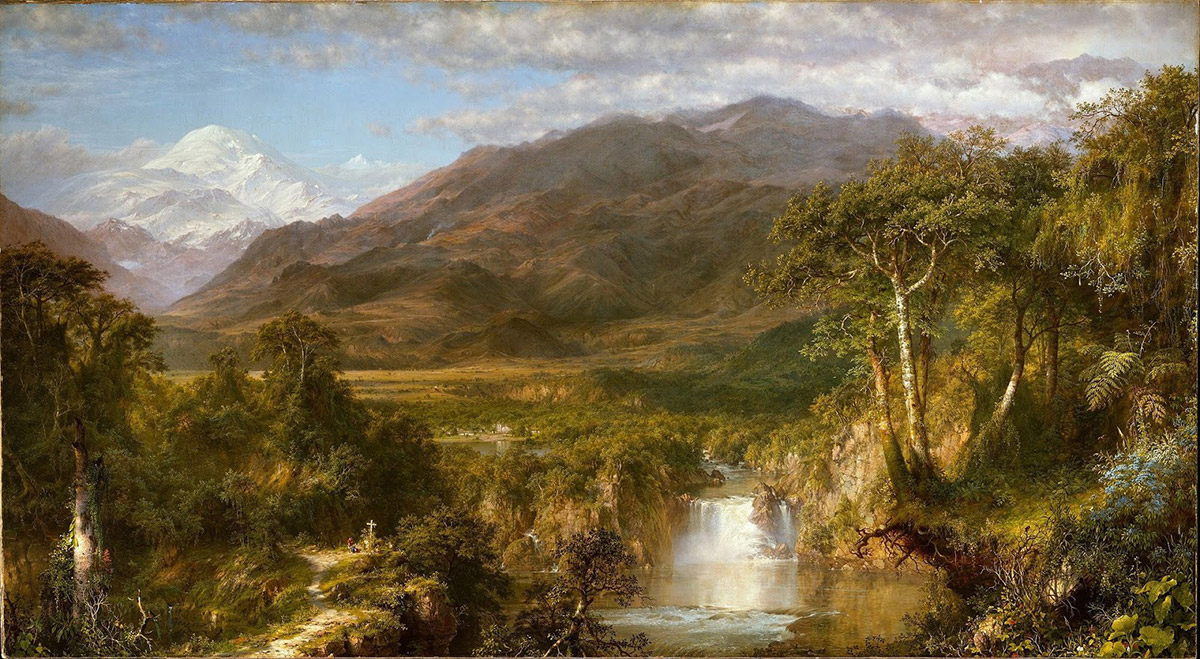 |
| “The Heart of the Andes” 1859 |
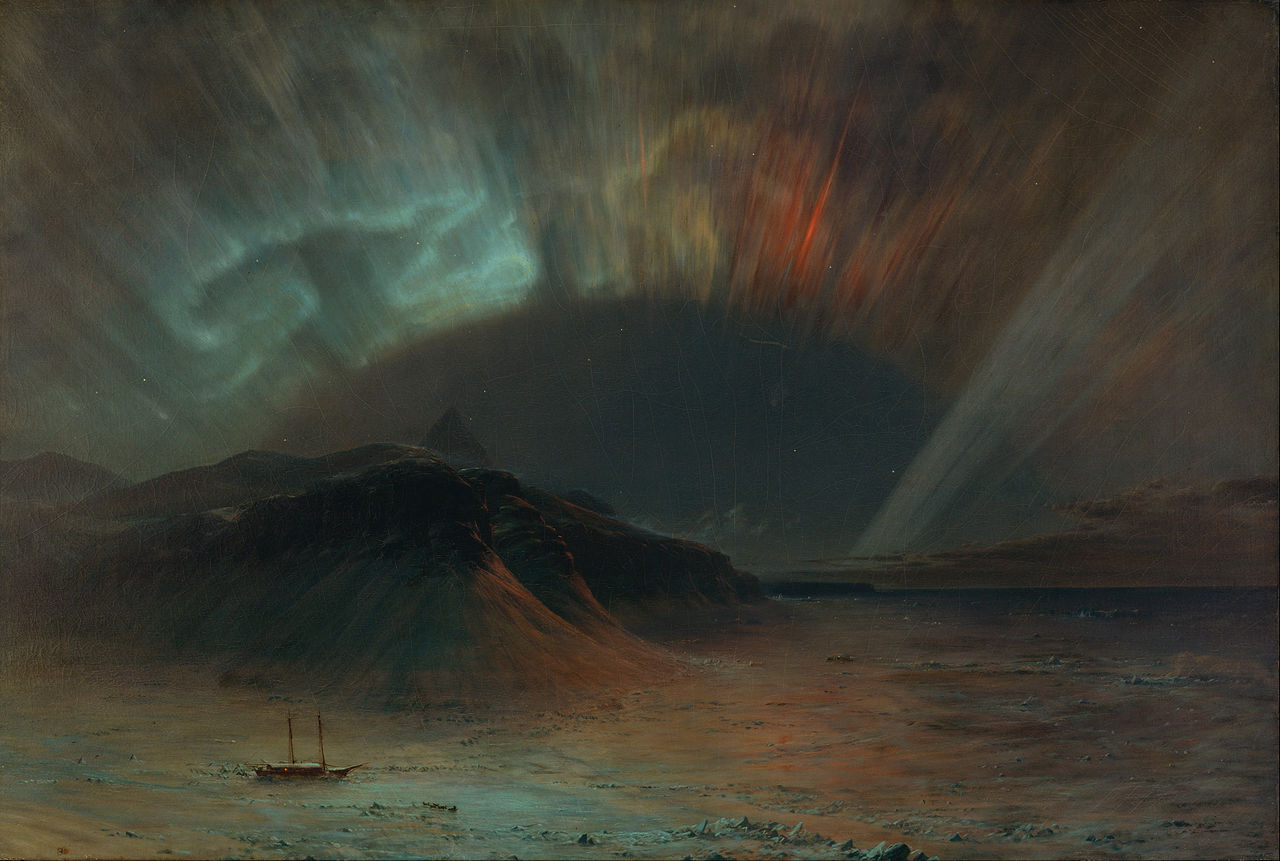 |
| “Aurora Borealis” 1865 |
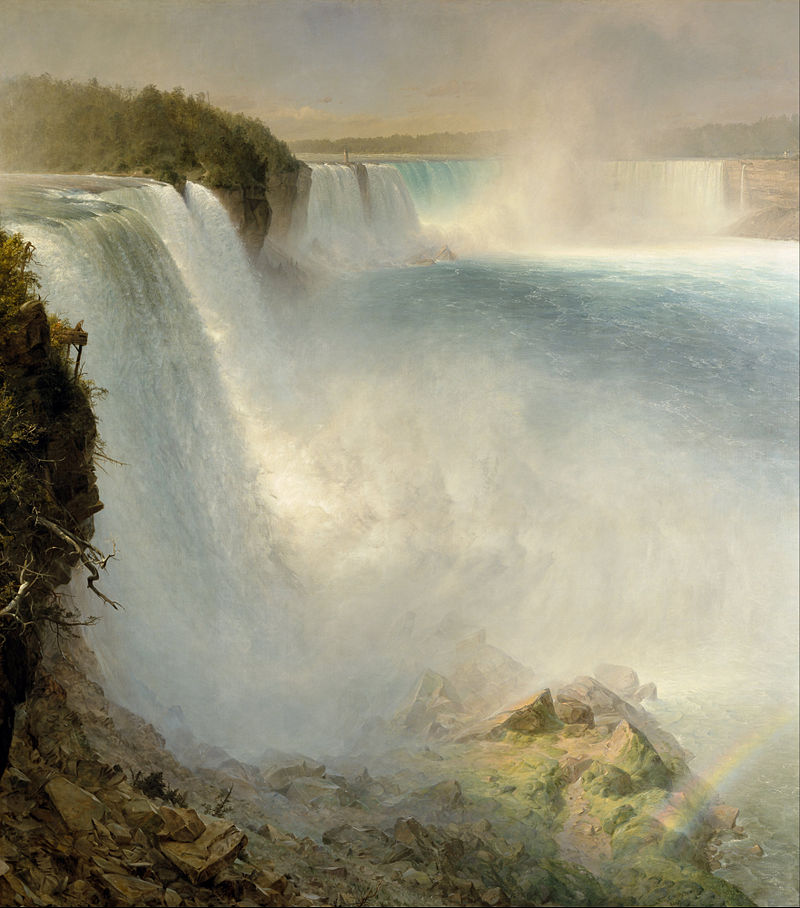 |
| “Niagra Falls, from the American Side” 1867 |
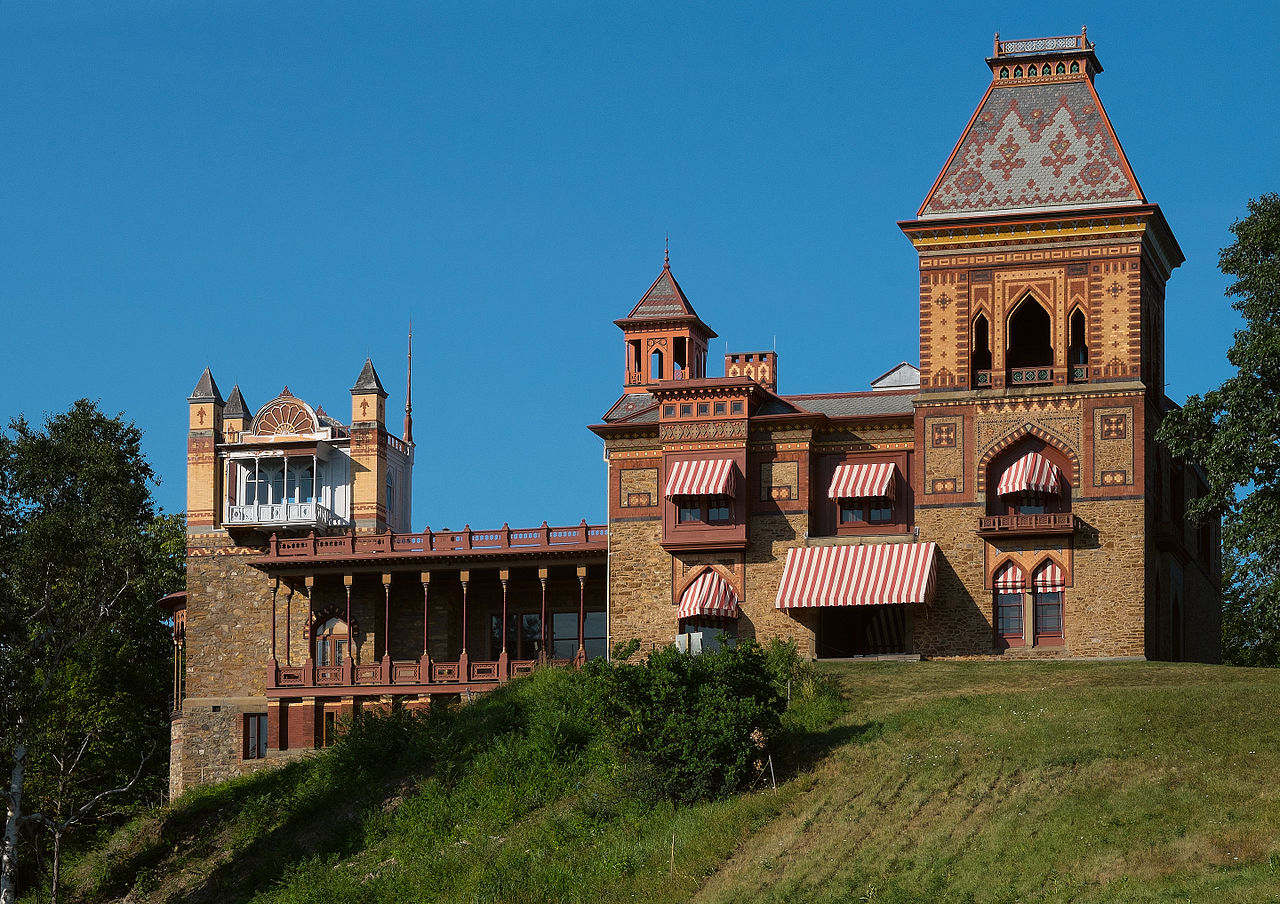 |
| “Olana” 1870 |


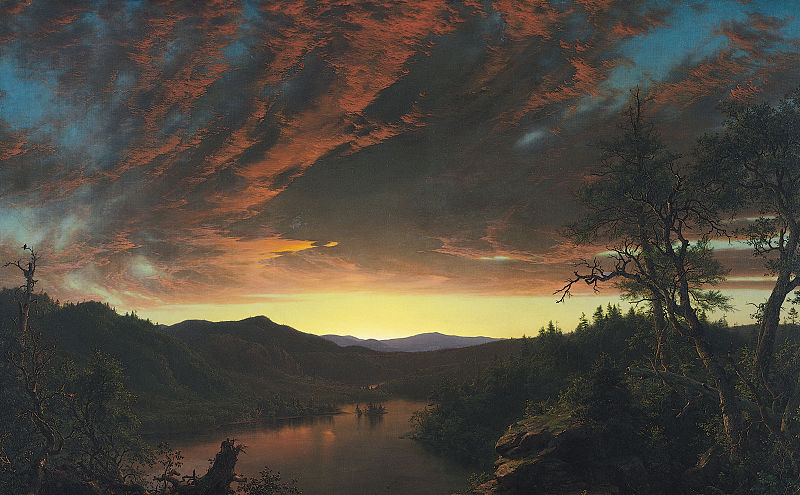
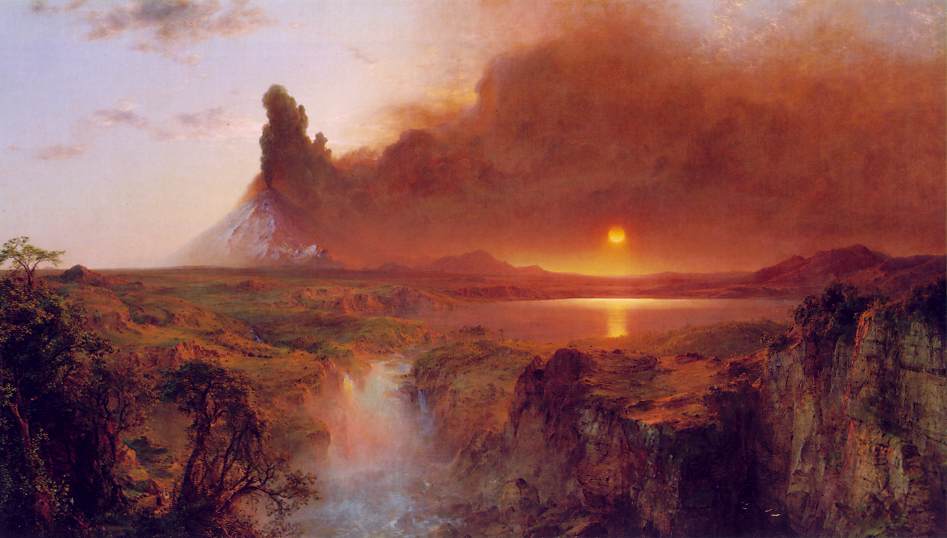
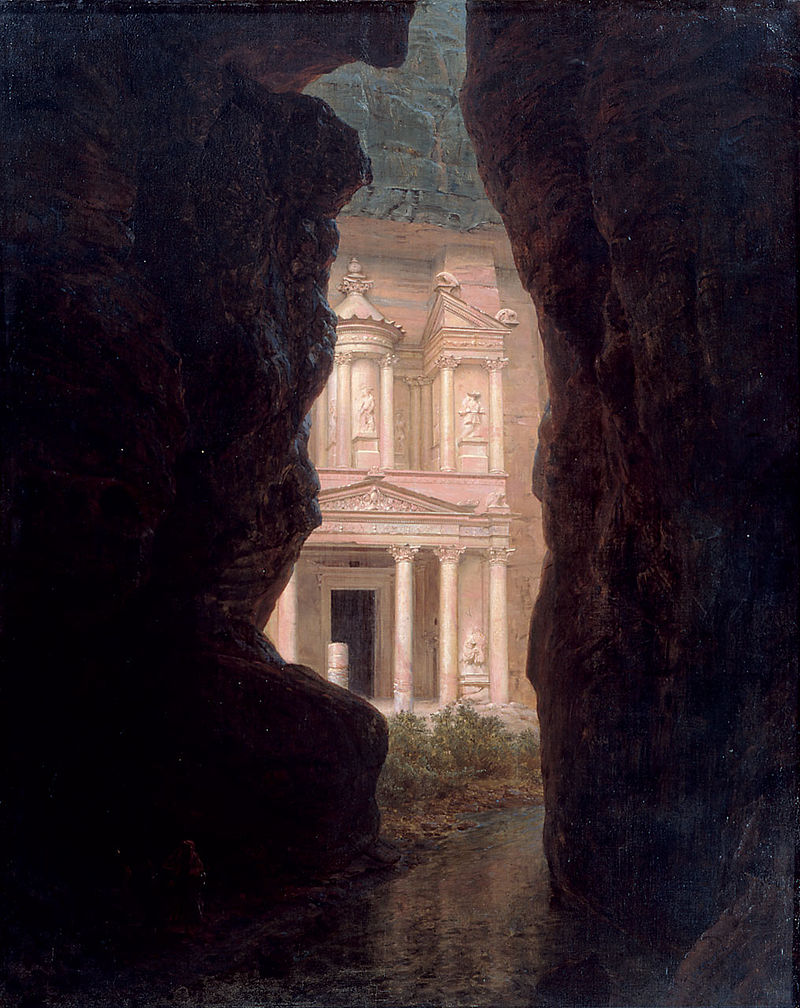
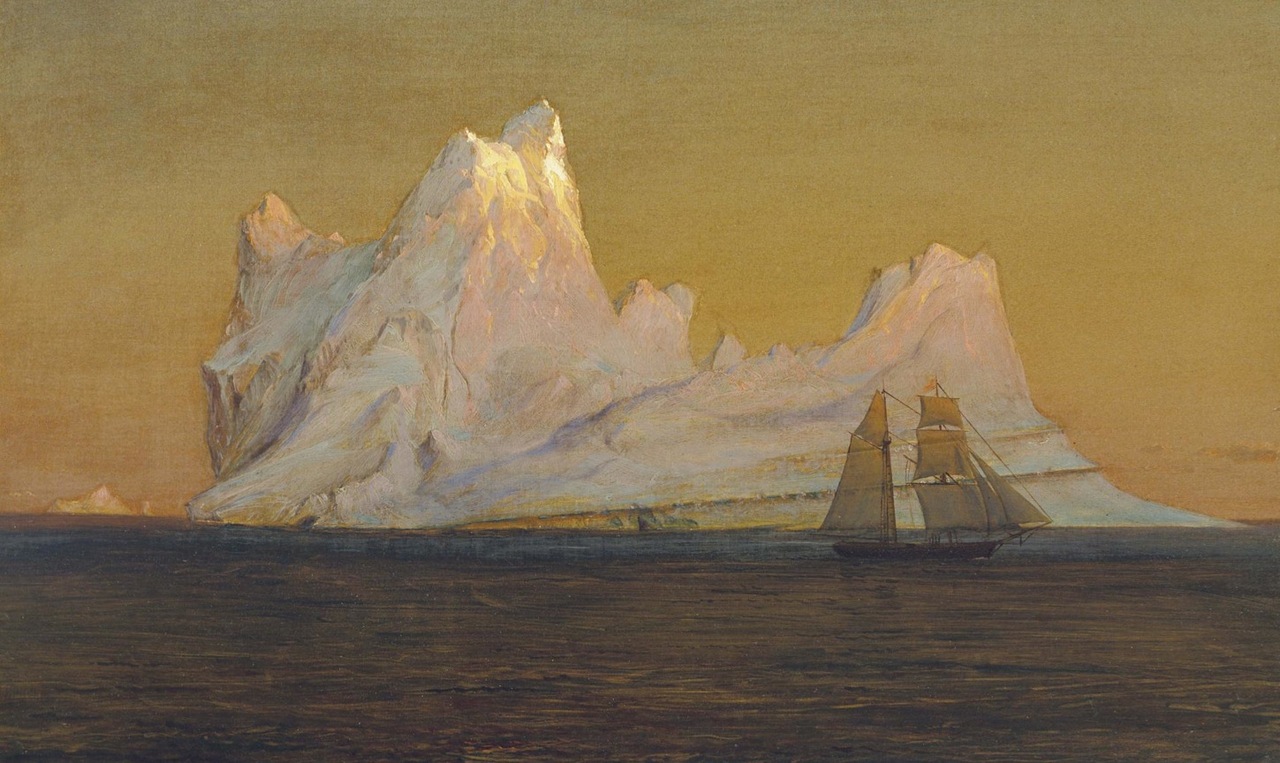
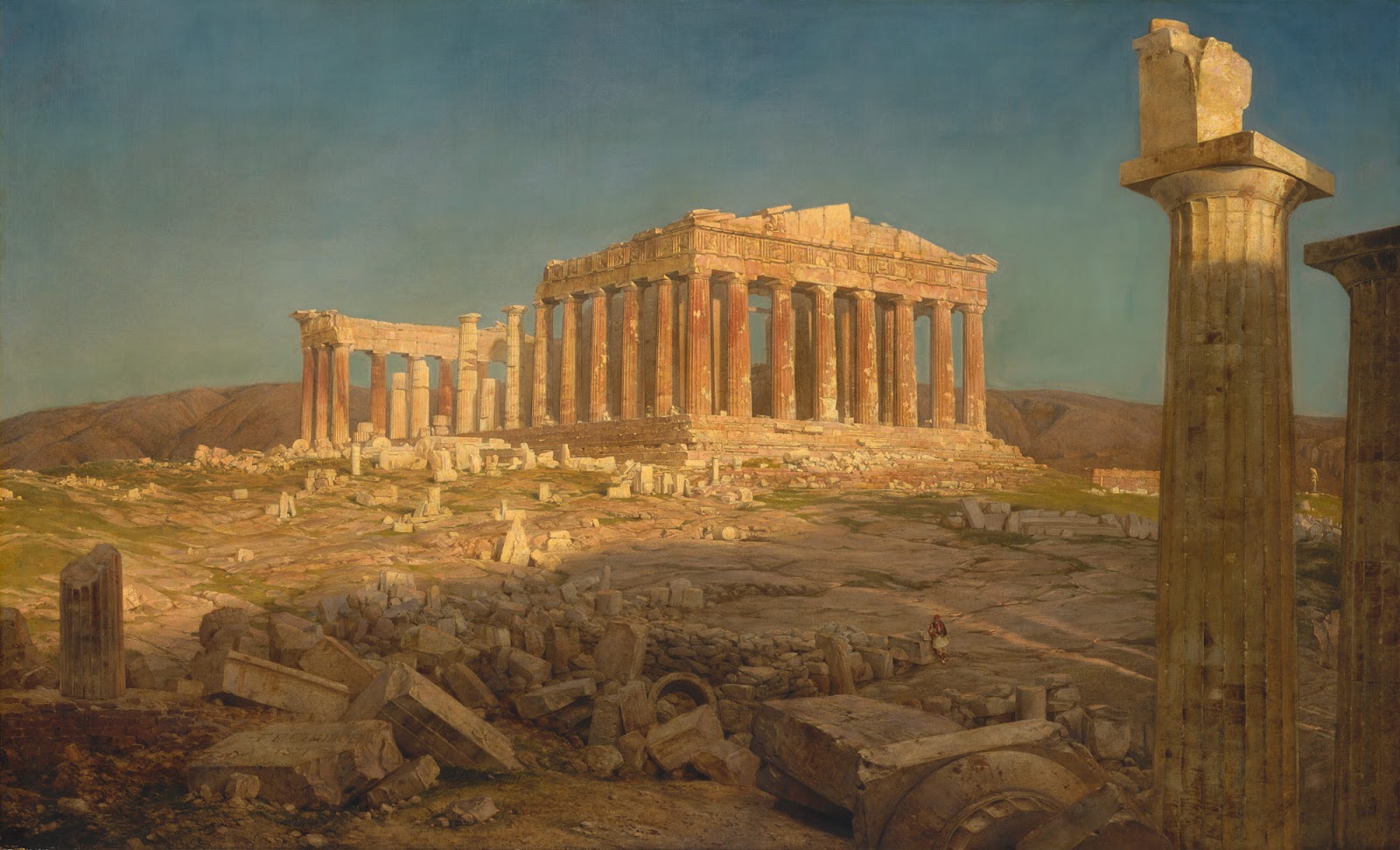
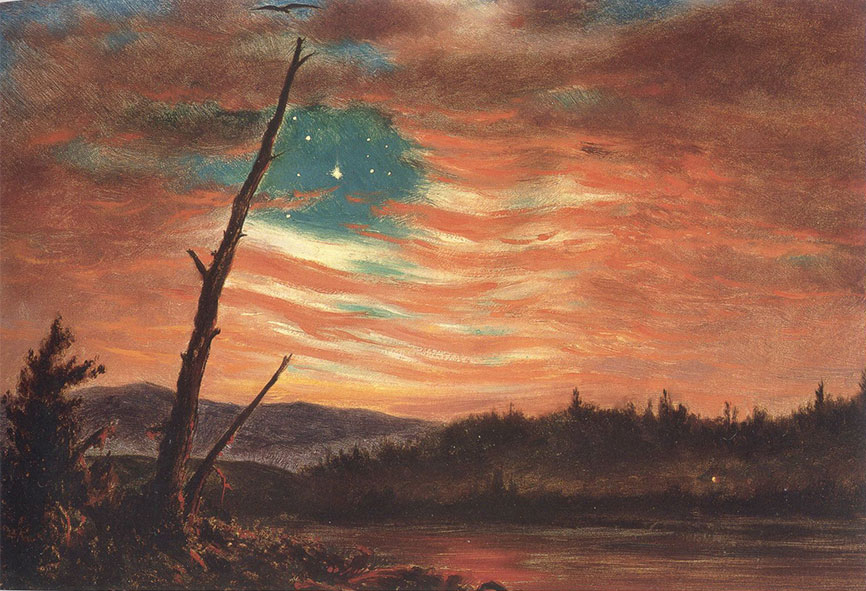

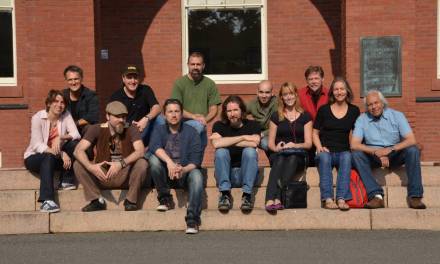

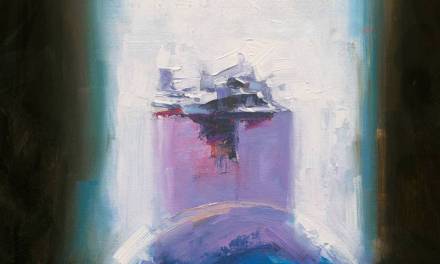
Church's work was the first work I fell in love with outside of the realm of illustration a couple decades ago now. Shortly thereafter, I also found the work of J.S. Sargent, also at the local library. I'm also a big fan of Thomas Moran, since not only were his landscapes phenomenal, but he played a big part of helping to establish the US National Parks.
Moran is excellent, I'll keep it on my list to do. THanks
One of my absolute faves.
nice
I didn't know Church since I visited the Tyssen Museum at Madrid (Spain) where many of his best pieces are displayed. I fell in love with his work. It is astonishing how he can create a mood so well. And I learnt observing in situ his pictures that great artists use anything available to create masterpieces: in a big canvas with a mountain covered by a forest, he made the “texture” of the trees tops with the back of his brush, scrubbing the fresh paint to show the underpainting. From two steps away it looked like he had painted by hand every tree top…